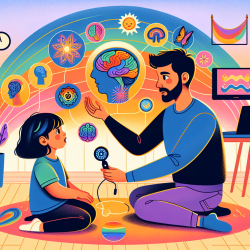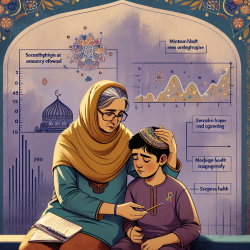Introduction
In the ever-evolving field of speech-language pathology, staying informed about the latest research is crucial for practitioners aiming to provide the best outcomes for children. One such insightful resource is the research article titled On Some Disorders of the Nervous System in Childhood. This article, published in the Glasgow Medical Journal, offers valuable findings that can enhance the skills of practitioners working with children experiencing neurological disorders.
Understanding Childhood Nervous System Disorders
The research delves into various disorders of the nervous system that manifest during childhood. Understanding these disorders is essential for speech-language pathologists, as they often intersect with communication challenges. The article highlights the importance of early diagnosis and intervention, emphasizing that timely therapeutic measures can significantly improve a child's developmental trajectory.
Key Findings and Their Implications
One of the critical takeaways from the research is the identification of specific neurological conditions that frequently co-occur with speech and language disorders. These include:
- Cerebral Palsy: The study underscores the impact of cerebral palsy on speech development, advocating for tailored therapeutic approaches that address both motor and communication challenges.
- Epilepsy: The research highlights the potential for speech and language delays in children with epilepsy, suggesting that practitioners should monitor these children closely for any signs of communication difficulties.
- Developmental Delays: The article discusses the broad spectrum of developmental delays and their implications for speech and language development, urging practitioners to adopt a holistic approach to therapy.
Implementing Research Outcomes
For practitioners looking to enhance their skills, integrating the findings from this research into their practice can be transformative. Here are some actionable steps:
- Continuous Education: Stay updated with the latest research and incorporate new findings into your therapeutic strategies.
- Interdisciplinary Collaboration: Work closely with neurologists and other healthcare professionals to develop comprehensive care plans for children with neurological disorders.
- Customized Therapy Plans: Design individualized therapy plans that consider the unique neurological and communication needs of each child.
Encouraging Further Research
While the article provides a robust foundation, it also opens avenues for further research. Practitioners are encouraged to explore the following areas:
- Longitudinal Studies: Conduct long-term studies to assess the effectiveness of early interventions in children with neurological disorders.
- Technological Integration: Investigate the role of technology in enhancing therapeutic outcomes for children with speech and language disorders.
- Cultural Considerations: Examine how cultural factors influence the diagnosis and treatment of childhood neurological disorders.
Conclusion
By leveraging the insights from On Some Disorders of the Nervous System in Childhood, practitioners can refine their skills and contribute to better outcomes for children. Continuous learning and adaptation are key to success in this field.
To read the original research paper, please follow this link: On Some Disorders of the Nervous System in Childhood.










